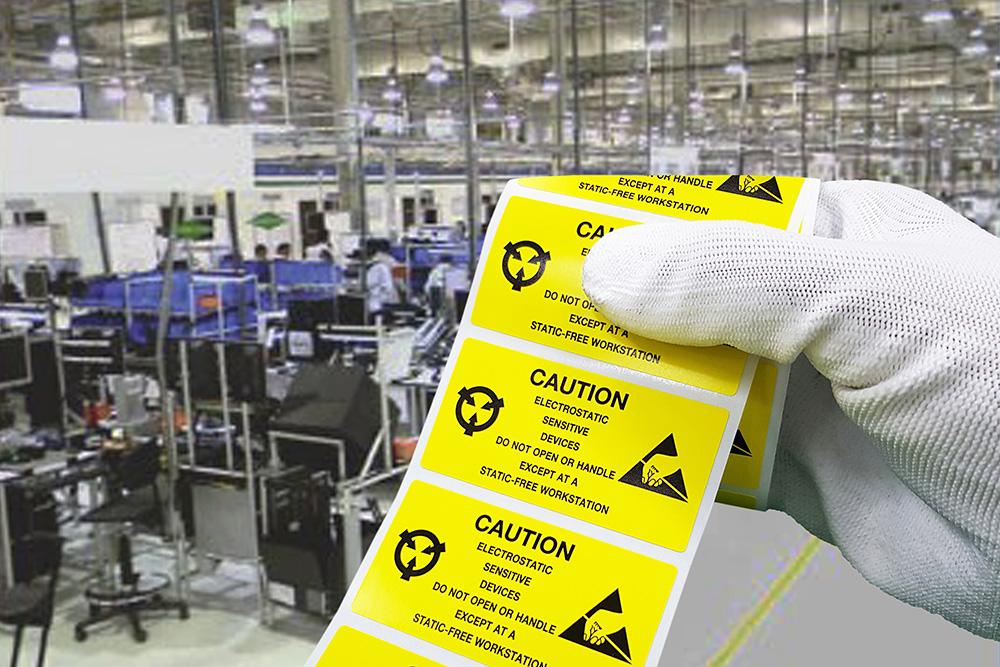Electrostatic Discharge Packaging Market Constrained by Recycling Issues and Emerging Low-Cost Alternatives

The Electrostatic Discharge Packaging Market has witnessed significant traction in recent years, driven by increasing demand from sectors such as electronics, automotive, aerospace, and healthcare. This packaging helps protect sensitive electronic components from damage caused by electrostatic discharges (ESD), which can lead to product failures or reduced lifespan. Despite these benefits and expanding applications, the market faces several pressing restraints that are impeding its full growth potential. These challenges—ranging from high material costs and environmental concerns to inconsistent global regulations—need to be addressed to ensure long-term market sustainability.
1. High Cost of Raw Materials and Production
One of the primary restraints facing the ESD packaging market is the high cost of raw materials used in manufacturing. Materials such as polyethylene terephthalate (PET), polyethylene (PE), and conductive polymers are more expensive when treated to deliver antistatic or conductive properties. These treatments often involve carbon loading or the incorporation of proprietary chemical additives, raising the overall cost of production.
Additionally, specialized manufacturing processes required to ensure consistent ESD protection—such as cleanroom environments or multilayer laminations—increase capital and operational expenditure for manufacturers. As a result, small and medium enterprises (SMEs), particularly in price-sensitive markets across Asia and Africa, are often discouraged from adopting ESD packaging solutions, opting instead for more cost-effective but less effective alternatives.
2. Limited Recyclability and Environmental Challenges
While ESD packaging plays a critical role in protecting electronics, many of its common forms—like antistatic foams, bubble wraps, and rigid trays—pose challenges in recycling and disposal. These materials often combine multiple polymers or include conductive additives, which make separation and reuse more complex in traditional recycling streams.
Growing environmental concerns and regulatory pressure for sustainable packaging have placed ESD packaging under scrutiny, particularly in the European Union and North America. As corporate sustainability goals become more ambitious, companies are seeking eco-friendly alternatives. However, biodegradable or recyclable ESD-compatible materials are still in nascent stages of development and are not yet cost-competitive with conventional options.
This environmental restraint may slow adoption in industries that are rapidly shifting toward sustainable supply chains, despite the critical protective role of ESD packaging.
3. Inconsistent Global Standards and Regulations
The absence of globally harmonized standards for ESD packaging also acts as a significant market restraint. While international standards such as ANSI/ESD S541 and IEC 61340 provide general guidelines, their implementation varies significantly across regions and industries.
Some manufacturers are forced to comply with region-specific requirements, which increases the complexity and cost of operations. For example, the automotive industry may require different ESD packaging compliance than the semiconductor industry, even within the same geography. This lack of standardization leads to fragmented demand and product customization, making it harder to scale operations and reducing economies of scale.
4. Growing Competition from Alternative Protective Solutions
Innovations in alternative protective packaging solutions also present a restraint to the ESD packaging market. For example, vacuum packaging, molded pulp packaging, or nanocoatings are emerging as potential alternatives in certain applications. These technologies offer protection not just from ESD, but also from moisture, vibration, and other environmental hazards—sometimes at a lower cost or with better environmental credentials.
Moreover, 3D printing of packaging components tailored for ESD protection is gaining ground in aerospace and medical device sectors. These alternatives are particularly attractive in niche markets where customization is essential, and volumes are too low to justify mass production of traditional ESD packaging.
5. Supply Chain Disruptions and Raw Material Volatility
The ESD packaging market is also affected by volatility in raw material prices and global supply chain disruptions. Events such as geopolitical conflicts, pandemics, and shipping delays have made it difficult for manufacturers to maintain stable production lines.
For instance, the availability of conductive additives or specialty polymers is often dependent on a few key suppliers, making the market vulnerable to price fluctuations. This impacts the profitability of ESD packaging providers and creates uncertainty in long-term supply contracts, discouraging customers from full-scale adoption.
6. Limited Awareness in Emerging Markets
In many developing economies, lack of awareness about ESD risks continues to hamper market penetration. Industries such as electronics assembly or healthcare diagnostics may not fully recognize the need for ESD protection, relying instead on conventional packaging that offers little or no static protection.
This education gap is exacerbated by the absence of local standards, insufficient training among logistics staff, and minimal regulatory enforcement. Without targeted outreach and training efforts, market expansion into emerging economies is likely to remain slow.
Conclusion
While the Electrostatic Discharge Packaging Market holds substantial promise—particularly as the electronics and healthcare sectors expand—several key restraints hinder its widespread adoption. High production costs, poor recyclability, inconsistent standards, and competition from alternative technologies are major obstacles to growth. Addressing these challenges will require coordinated efforts from manufacturers, regulators, and end-users alike. Innovations in sustainable materials, greater standardization, and increased awareness can help unlock the full potential of ESD packaging in the years ahead.
- Art
- Causes
- Crafts
- Dance
- Drinks
- Film
- Fitness
- Food
- Games
- Gardening
- Health
- Home
- Literature
- Music
- Networking
- Other
- Party
- Religion
- Shopping
- Sports
- Theater
- Wellness


